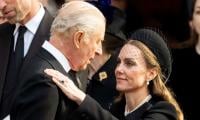ISLAMABAD: Pakistan’s reliance on foreign commercial loans has been increasing at rapid pace as the country obtained $3.110 billion through this head out of a total of $7.2 billion external loan inflows during the first eight months (July-Feb) period of the current fiscal year.
The foreign commercial loans of $3.11 billion and $1 billion from Chinese deposits helped the government to achieve the net transfer of dollar inflows in the current fiscal year. With the combination of foreign commercial loans and safe deposits, Pakistan received over $4.1 billion that was over 50 percent out of the total received foreign dollar inflows from creditors.
According to official data of Economic Affairs Division (EAD), during July-February of fiscal year 2020-21, the government has received $7.208 billion total external inflows from multiple financing sources, which are 59 percent of annual budget estimates of $12.233 billion for the entire fiscal year 2020-21.
In the corresponding period of the fiscal year 2019-20, the external inflows were $6.282 billion, which were also around (51pc) of the annual budgeted amount of $12.958 billion. The total receipt of $7.208 billion constitutes $1.349 billion or 19pc as program/budgetary support assistance to restructure Pakistan’s economy; $3.110 billion (43pc) as foreign commercial borrowing to repay maturing foreign commercial loans; and $1.350 billion (19pc) as project assistance to finance development projects activities for improving the socio-economic development of the country and for asset creation and $399 million (05pc) as commodity financing while $1 billion (14pc) received as safe deposits from China. It is relevant to mention here that China provided $1 billion to bridge the financing gap that had emerged in the aftermath of getting back loan facility by Saudi Arabia.
Disbursement from multilateral & bilateral development partners also maintained a strong trend and is $3.098 billion during the period under review against the budgetary allocation of $5.811 billion for the fiscal year 2020-21 on concessional terms with longer maturity. These healthy inflows also helped to improve foreign exchange reserves and exchange rate stability.
Amongst the multilateral development partners, mainly the Asian Development Bank, provided $1.210 billion, the World Bank disbursed $909 million against the budgetary allocation of $2.257 billion. While from bilateral sources, France, USA and China provided $34.8 million, $76.6 million & $95.4 million respectively.
The government claims in its official report that increased level of external inflows from multilateral and bilateral development partners is indicative of their confidence in development priorities and policies of the government, including implementation of reforms in the priority areas of fiscal and debt management, energy sector and ease of doing business.
The strong official inflows during the seven months of current fiscal year helped the government to discharge its external public debt obligation of $4.124 billion against the annual repayment estimates of $10.363 billion for the entire Fiscal Year. Of which, $3.474 billion (84pc of total external public debt servicing) was repaid as principal and $650 million (16pc) as interest on the outstanding stock of external public debt.
During July-January 2020-21, the government settled $2.103 billion worth of foreign commercial loans. Similarly, the government has also repaid $1.754 billion to multilateral and $103 million to bilateral development partners. Considering foreign exchange constraints, financing of development projects and repayments of these huge external public debts compel the incumbent government to further borrow from multiple sources.















